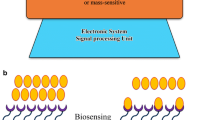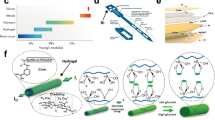Abstract
The material-tissue interaction that results from sensor implantation is one of the major obstacles in developing viable, long-term implantable biosensors. Strategies useful for the characterization and modification of sensor biocompatibility are widely scattered in the literature, and there are many peripheral studies from which useful information can be gleaned. The current paper reviews strategies suitable for addressing biofouling, one aspect of biosensor biocompatibility. Specifically, this paper addresses the effect of membrane biofouling on sensor sensitivity from the standpoint of glucose transport limitations. Part I discusses the in vivo and in vitro methods used to characterize biofouling and the effects of biofouling on sensor performance, while Part II presents techniques intended to improve biosensor biocompatibility.
Similar content being viewed by others
Author information
Authors and Affiliations
Additional information
Received: 21 September 1999 / Revised: 24 November 1999 / Accepted: 19 December 1999
Rights and permissions
About this article
Cite this article
Wisniewski, N., Moussy, F. & Reichert, W. Characterization of implantable biosensor membrane biofouling. Fresenius J Anal Chem 366, 611–621 (2000). https://doi.org/10.1007/s002160051556
Issue Date:
DOI: https://doi.org/10.1007/s002160051556




